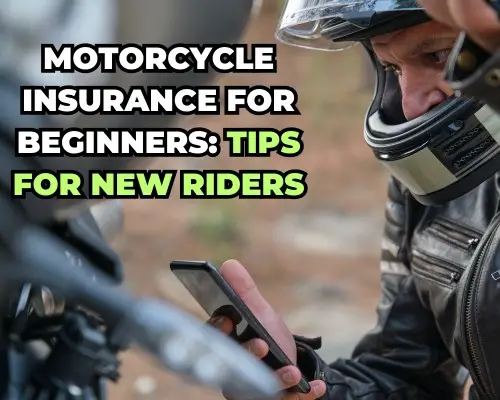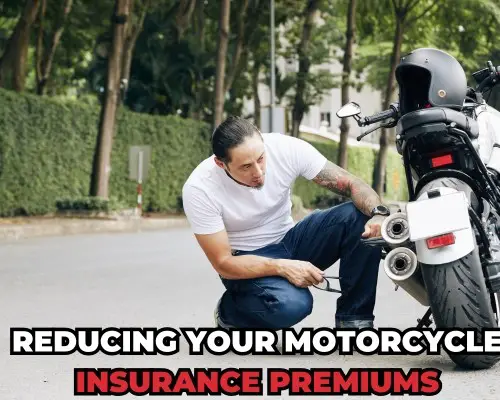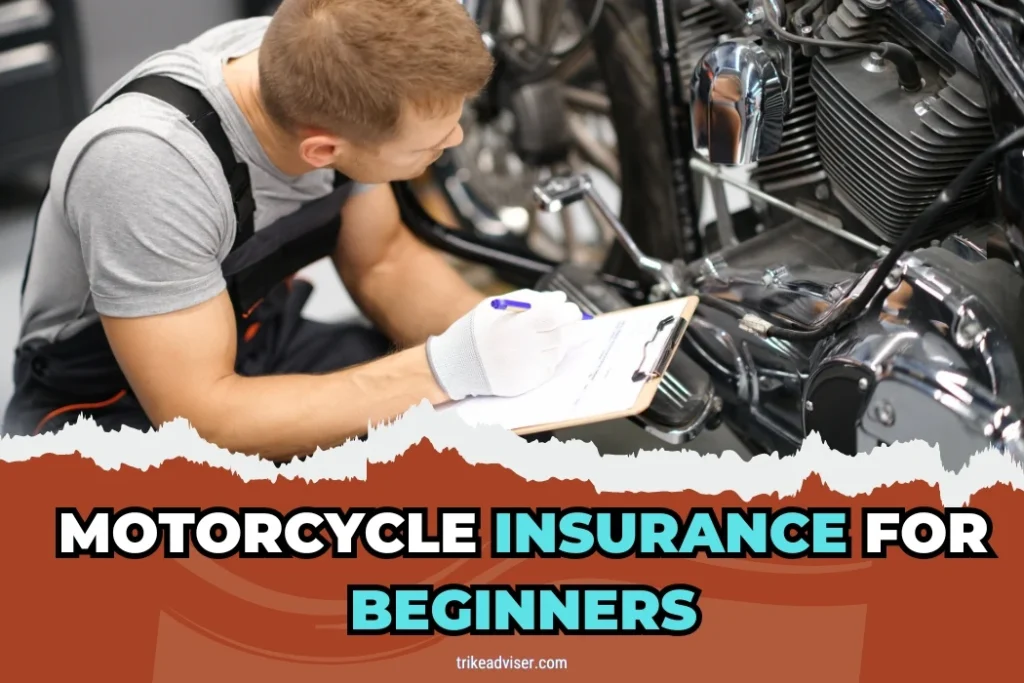It’s not just about the ride. It’s the freedom, the air, and the speed. But then comes insurance. Suddenly, the excitement dims.
Why? Navigating motorcycle insurance feels like trying to read a map in the dark. Confusing, right? Most beginners are lost at this stage.
They ask: What coverage do I need? How do I get a fair rate? Will my premiums skyrocket if I’m new? Here’s the kicker. Insurance doesn’t have to be a nightmare.
It starts with understanding a few basics. Are you a new rider? Do you want to protect your bike without breaking the bank? If yes, this guide is your first gear toward mastering motorcycle insurance.
Motorcycle Insurance for Beginners: Tips for New Riders

Speak with a Licensed Insurance Professional
Think of your first solo ride. The excitement, the nerves. Choosing insurance feels similar. A licensed professional is like that friend who’s ridden for years.
They guide you, ensuring you understand every turn. They’ll explain terms like “liability” and “comprehensive” in plain English.
Remember, no question is too small. They’ve heard them all, and their answers can turn confusion into clarity. It’s about building confidence, not just a policy.
Consider the Style of Motorcycle
Choosing a bike is like choosing a travel partner. That sports bike? Thrilling but high maintenance, especially in insurance costs.
A cruiser, on the other hand, is like a friend who’s up for anything, and easy-going with the budget too. Insurance rates reflect this.
A study by the Insurance Institute for Highway Safety (IIHS) shows sport bike riders face higher injury rates, influencing premiums. Your bike’s style speaks volumes to insurers.
Your Age and Riding Experience
Recall the rush of your first ride. Young riders embody this thrill, but for insurers, it’s a red flag. Premiums for riders under 25 mirror this risk.
However, this isn’t the end. Completing a certified rider training course can not only sharpen your skills but might also lower your rates. It’s a win-win, offering both safety and savings.
Location, Location, Location
Your surroundings impact your ride, just as they influence your insurance. City dwellers navigate more than traffic; they face higher theft and accident rates, elevating premiums.
Conversely, rural riders enjoy more than scenic routes; they often benefit from lower rates. The National Highway Traffic Safety Administration (NHTSA) reports varying accident rates by geography, directly affecting insurance costs.
Type of Motorcycle Matters
Your bike is more than a ride; it’s a risk profile. Models known for safety and reliability often command lower insurance rates.
It’s like investing in quality gear; upfront costs may be higher, but long-term benefits—in safety and savings—are substantial.
Consider this when bike shopping. A model with a high theft rate or costly repairs can mean pricier premiums.
Riding History and Previous Claims
Imagine you’re riding history as a road map. Every clean mile is a point in your favor. Insurers prize this, offering lower premiums for unblemished records.
It’s tangible proof of your commitment to safety. Remember, a single speeding ticket can alter your course, affecting rates. It’s not just about avoiding penalties; it’s about maintaining a trajectory that keeps costs down.
Coverage Options and Deductibles
Packing for a long trip requires balance. So does selecting your insurance coverage. Opting for a high deductible might lower your monthly premium, but consider if you can handle the out-of-pocket cost in an accident.
It’s about knowing your limits, both on the road and financially. A balanced approach ensures you’re covered without overextending.
Safety Features Save Money
Equipping your bike with safety features can help you save money on insurance just as you get ready for a ride. ABS features can result in premium discounts in addition to keeping you safer.
According to the IIHS, bikes with ABS had a 37% lower chance of dying in a collision. Both money and lives are saved by technology.
Bundling Policies for Discounts
Consider your insurance policies like a garage. Housing your motorcycle, car, and home insurance under one roof can unlock discounts.
It’s the convenience of a one-stop shop with the added benefit of savings. It simplifies your financial maintenance, making it easier to manage and often cheaper.
Customizations and Insurance
Modifying your bike is a form of personal expression. But remember, to insurers, these custom parts are like exotic ingredients in a recipe.
They need to be itemized and covered separately. Don’t let your customizations become financial vulnerabilities.
Ensure they’re included in your policy. It’s about protecting your bike, just as you’d protect a masterpiece.
Choosing the Right Insurance Policy

Starting the process of obtaining motorcycle insurance? Planning a long-awaited road trip is similar to that. Planning with exactitude makes all the difference, turning a trip from enjoyable to amazing.
Understanding Different Types of Coverage
Navigating through the types of motorcycle insurance is like packing for diverse weather conditions. Each coverage type shelters you from a specific storm.
- Liability Insurance: Imagine this — a minor lapse in attention and you’re suddenly responsible for someone else’s hospital bills or a damaged car.
Liability insurance is like the apology that comes with a financial cushion, ensuring you can make things right without draining your savings.
Remember, this coverage doesn’t just meet legal requirements; it’s your moral compass in accident scenarios.
- Collision Coverage: There’s a moment, perhaps a split second when you realize a crash is inevitable.
Collision coverage is the reassurance that the aftermath is manageable. Think of it as your bike’s regeneration shield, repairing damages regardless of who’s at fault. It’s about getting back on the road with minimal hassle.
- Comprehensive Coverage: Your motorcycle’s risks don’t pause when parked. Theft, vandalism, or an unexpected hailstorm can leave you without your beloved ride.
Comprehensive coverage is the watchful protector, guarding against the perils of simply existing in the world. It ensures that your investment is secure, come what may.
- Uninsured/Underinsured Motorist Coverage: Now, picture the frustration of being hit by someone without insurance.
This coverage is the unseen guardian angel, stepping in to cover costs that someone else should have been responsible for. It’s an essential buffer against the irresponsibility of others.
Assessing Your Needs: How Much Coverage Do You Need?
Reflecting on your coverage needs is akin to selecting the right gear for a challenging ride. Consider the bike’s value, yes, but also ponder over the ‘what ifs’.
What if you’re stranded with medical bills? Or if your motorcycle becomes a target for theft? Tailoring your insurance to fit your life’s unique path isn’t just practical; it’s a necessity. It’s about ensuring your peace of mind is as intact as your motorcycle.
The Impact of Deductibles on Your Policy
Choosing your deductible is like setting the difficulty level on a game. Opt for a high deductible, and you’re gambling on a smoother ride with lower monthly costs.
But if trouble strikes, the initial outlay might sting. Conversely, a lower deductible eases the post-accident financial blow, though it nudges up your premiums.
It’s a delicate balance, striking harmony between immediate affordability and future security.
Choosing the right insurance policy transcends mere transactions. It’s an art form, that blends intuition with information.
Each decision, from coverage types to deductibles, shapes the journey ahead. It’s about crafting a safety net that lets you embrace the freedom of the ride, cushioned from the unpredictability of the road.
Reducing Your Motorcycle Insurance Premiums

Looking to save on motorcycle insurance without cutting corners? It’s like tuning your bike for better performance. A few smart adjustments can lead to significant savings.
Safety Courses: Lowering Costs and Enhancing Skills
Think of a safety course as both a shield and a sword. It arms you with defensive riding techniques while potentially slicing your premium. Insurers often view trained riders as lower risks, rewarding them with discounts.
It’s a classic case of knowledge paying off—literally. Plus, these courses refresh your skills, making every ride safer. The exact discount varies, but peace of mind and savings are universal benefits.
The Benefits of Installing Anti-Theft Devices
Motorcycles, unfortunately, attract more than admiring glances. They’re theft magnets. An anti-theft device acts like a bike’s loyal guard dog.
From simple locks to sophisticated GPS trackers, these gadgets can dissuade thieves and impress insurers. Not every device triggers discounts, so check with your insurer.
The investment not only secures your ride but can also trim down your insurance costs. It’s a dual-layer protection, for both your motorcycle and your wallet.
Shopping Around: Comparing Quotes for the Best Rates
Ever shopped for the perfect motorcycle accessory? Finding insurance is similar but with bigger stakes. Quotes can vary widely between companies.
Dedicating time to compare offers is like scouting for the best riding paths; it pays off in enjoyment and, in this case, savings.
Contacting at least six insurers sounds daunting but think of it as curating the best insurance package. With each quote, you’re closer to the perfect balance of cost and coverage.
The Advantages of Policy Bundling
Bundling policies is like packing efficiently for a long trip. Why take separate bags when one can fit everything? By ensuring your motorcycle, car, and home with the same company, you streamline your financial commitments and unlock discounts.
Insurers appreciate the loyalty and the simplicity of managing multiple policies and passing on the savings to you. It’s a strategy that benefits everyone, creating a more manageable insurance experience.
Tackling insurance premiums doesn’t have to be a solo ride. With the right strategies—educating yourself, protecting your bike, shopping wisely, and bundling—you can navigate the roads of insurance with confidence.
Each decision not only protects your motorcycle but also secures your financial well-being, letting you enjoy the ride with peace of mind.
What Every Rider Should Know – Making a Claim

After a motorcycle accident, the road to recovery often begins with a claim. It’s a path paved with paperwork and procedures, yet filled with opportunities for personal advocacy and recovery.
The Claims Process Explained
Imagine the seconds after an accident: confusion, adrenaline, concern. Amidst this, knowing how to initiate a claim provides a semblance of control.
Contacting your insurer promptly is crucial, akin to reaching out to a trusted friend in a time of need. They’ll walk you through the necessary steps, each question aimed at piecing together the incident.
- Immediate Actions: First, ensure everyone’s safety. Then, with a steady hand, document the scene. These first steps are your claim’s foundation.
- Gathering Evidence: Like collecting pieces for a puzzle, every photo, note, and number is vital. This isn’t just about recollection; it’s about building a case for your claim.
Documentation and Steps to Take After an Accident
In the chaos, your phone is more than a device; it’s your digital witness. Snap pictures not just of the damage and immediate surroundings, but also of distant factors that might have contributed to the accident. Each image is a silent testimony to the event.
- Medical Documentation: Even minor injuries should be documented. In the moment, adrenaline may mask pain. Documentation isn’t merely for claims; it’s a chapter in your recovery story.
- The Role of Police Reports: Securing a police report isn’t just a procedural step. It’s a third-party account of the incident, providing an unbiased perspective that can be crucial for your claim.
How Claims Affect Future Premiums
The worry of increased premiums post-claim is akin to a cloud looming over riders. Yes, at-fault accidents might darken your insurance landscape with higher premiums.
But it’s not always so. Non-fault incidents are like passing shadows, unlikely to leave a mark on your rates. Insurance, at its core, is about assessing risk, and a single claim doesn’t define your riding future.
- Understanding Rate Adjustments: If premiums rise, remember, it’s not personal. It’s statistical. But with a clean record and time, these adjustments can fade, much like scars.
Negotiating with Insurers
Facing an unsatisfactory settlement offer is like receiving an unfair score in a competition. It’s not the final say.
Armed with your evidence and understanding of your policy, negotiation becomes less of a battle and more of a dialogue for fairness.
Working with a Personal Injury Attorney
In intricate cases, a personal injury attorney isn’t just legal representation. They’re your advocate, interpreter, and sometimes, your peace of mind.
They translate the complexities of law into actionable steps, turning obstacles into opportunities for rightful compensation.
Navigating a claim is a journey of resilience, requiring more than just following steps. It’s about asserting your rights, understanding your coverage, and ensuring your voice is heard.
It’s a road that, while bumpy, leads towards recovery and justice, with every document and action a step towards closure and healing.
As an Amazon Associate, I earn from qualifying purchases, at no additional cost to you. Read Our Affiliate Disclosure.

